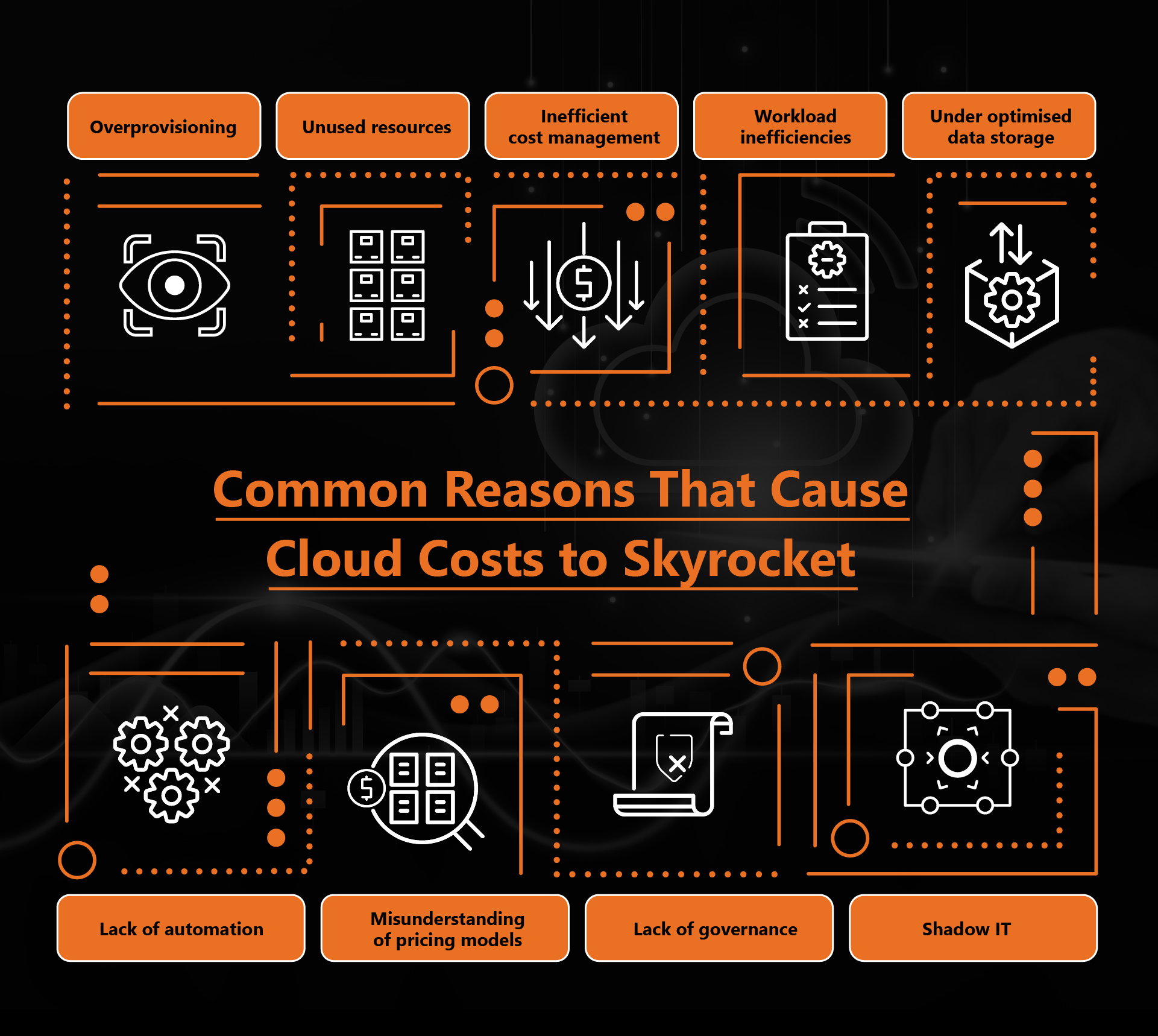
Overprovisioning
This occurs when more resources are allocated than necessary for workloads, often due to uncertainty about future needs or insufficient visibility into actual resource utilisation. This can lead to higher costs and inefficiencies as resources are not used optimally.
Unused resources
Paying for unused or underutilised resources is a huge waste of money, but it happens quite regularly due to inefficient application design, seasonal fluctuations or forgotten resources.
Inefficient cost management
This occurs when cloud costs are not tracked consistently or meticulously, leading to unexpected expenses and wasted resources due to a lack of visibility and control over spending.
Workload inefficiencies
This means running inefficient workloads on expensive instances due to outdated software, poor application design or inefficient algorithms.
Under optimised data storage
This happens when data is stored in higher-cost storage tiers than necessary, without leveraging more cost-effective or appropriate storage solutions based on data access patterns and requirements.
Lack of automation
Relying on manual processes and configurations can result in errors and inefficiencies, which not only drive up costs but also lead to inconsistent resource management and increased potential for overspending.
Misunderstanding of pricing models
While the pay-as-you-go model of cloud services can be appealing, a lack of full understanding often leads to unexpected charges and cost overruns. It can also be difficult to track price changes over time and what may be a good deal now may not be further down the road.
Lack of governance
Insufficient governance and the absence of clear policies can lead to unchecked spending and inefficient resource use. Without proper oversight, cloud resources may be abused and provisioned without regard for cost control, leading to unexpected expenses and inefficiencies.
Shadow IT
Unauthorised use of cloud services by individuals or teams can result in hidden costs and security risks, as unmanaged resources contribute to untracked expenses and potential vulnerabilities.